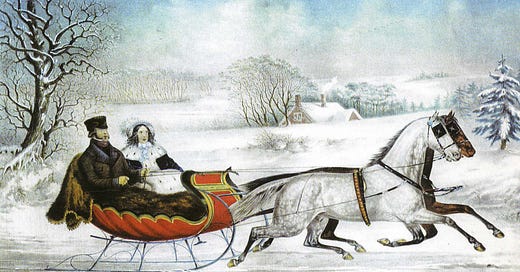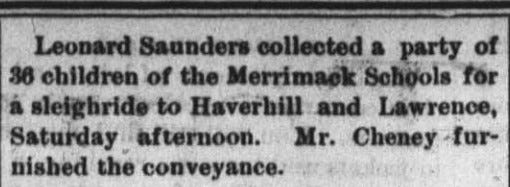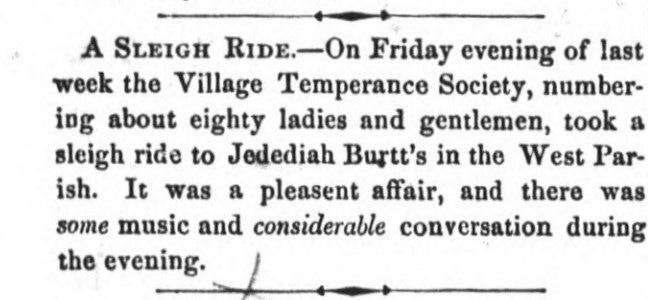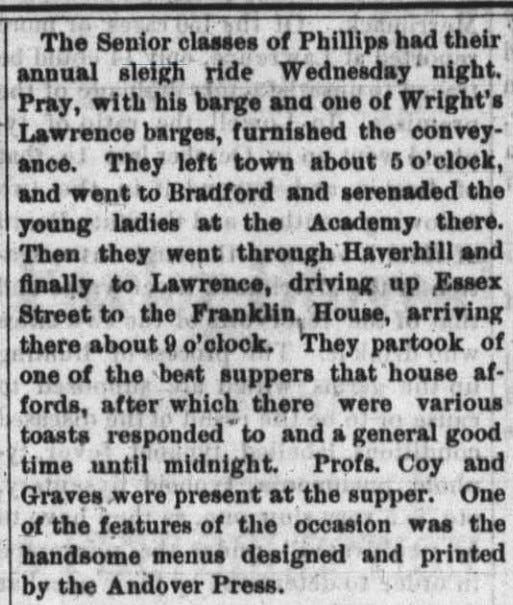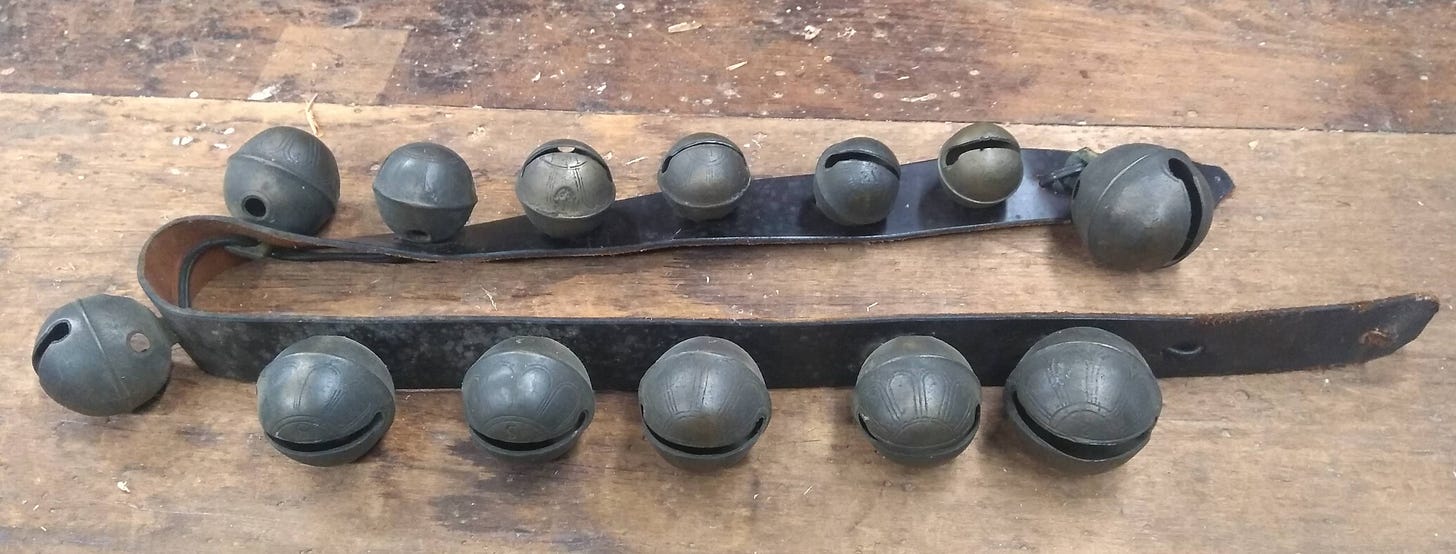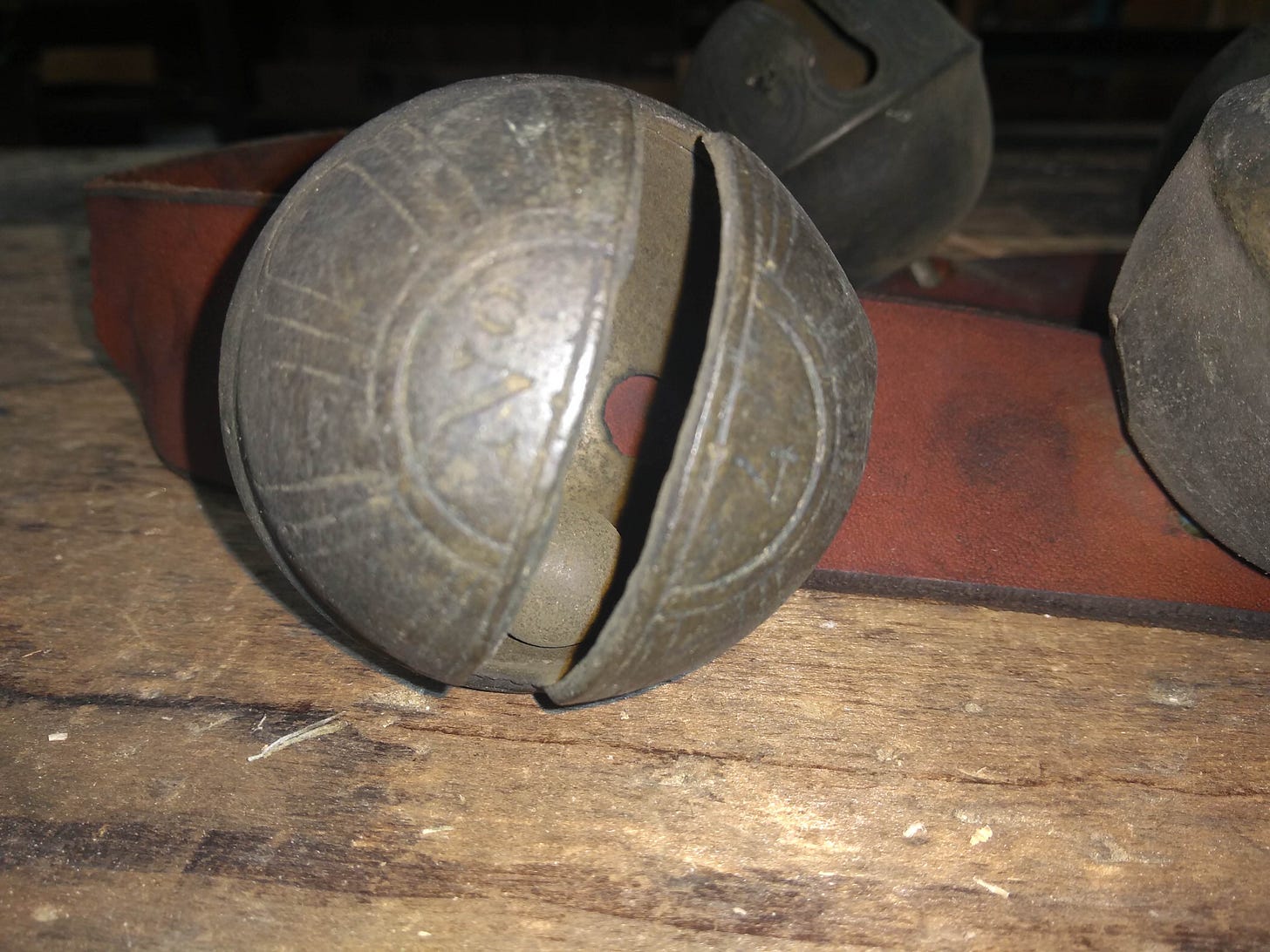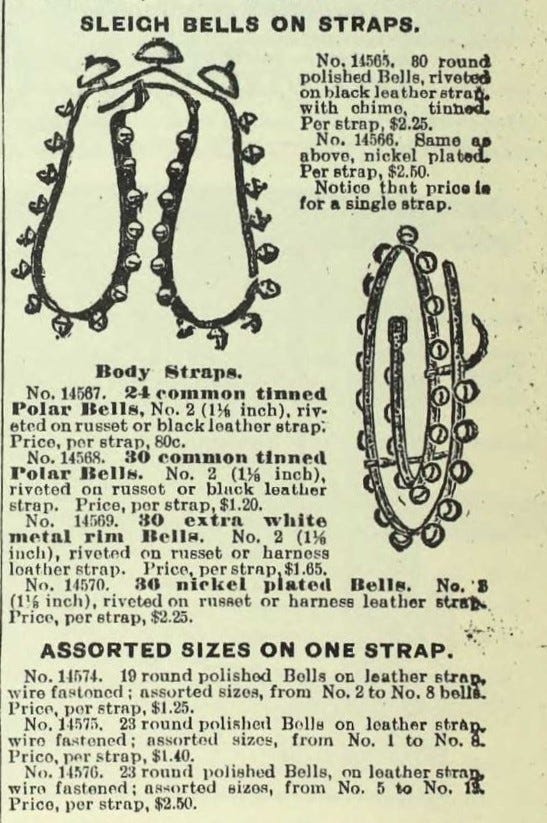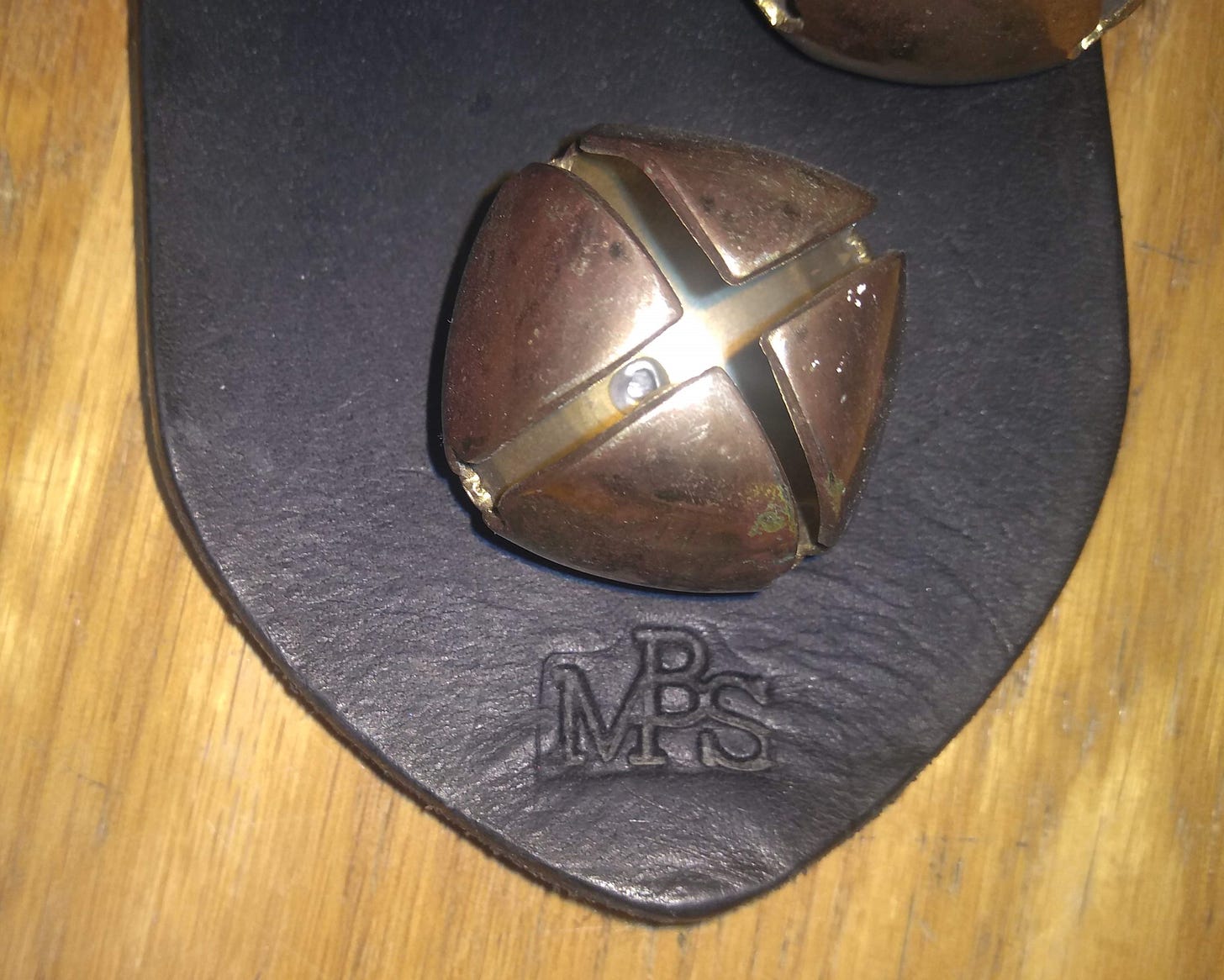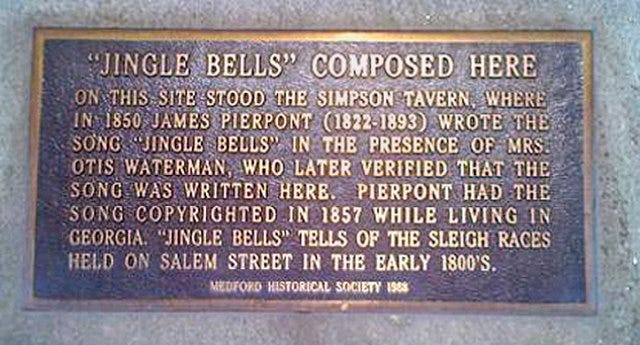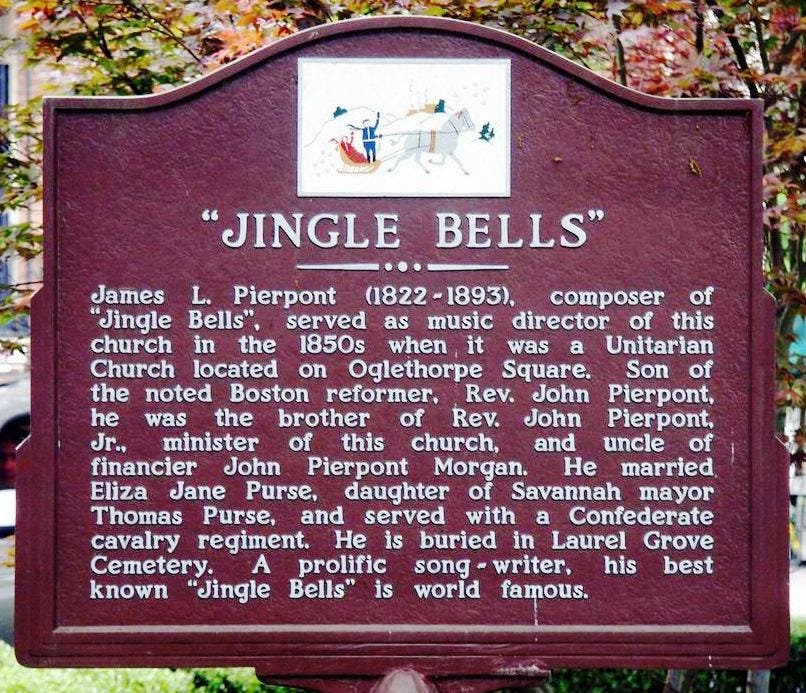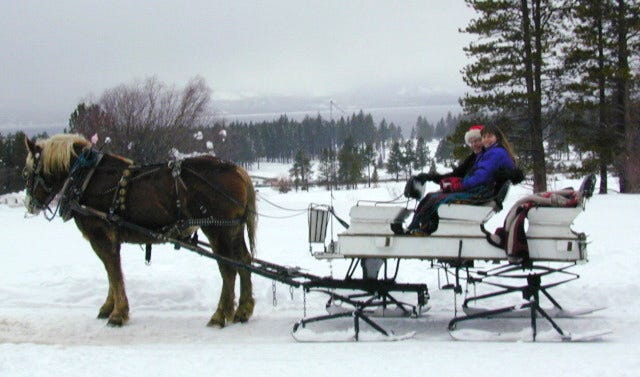What's It Wednesday - Bells, Bells, Bells
Sleigh Bells ring, are you listening? Jingle bell, Jingle bell, Jingle bell Rock, Dashing through the snow, In a one-horse open sleigh…
What’s with all the bells?
Sleigh rides were the popular winter pastime in the 1800s. Before automobiles and trolleys, traveling by horse-drawn wagons and, when there was snow, by sleds, flat-bed punts on runners and sleighs, were the only options other than walking.
Particularly in New England, sleigh rides were entertainment and a social activity for many.
In her memoirs, Andover resident Abby Locke Thomson, remembered the sleigh rides and parties of her youth – “We had sleigh rides every winter in a very handsome party sleigh to Lowell or Haverhill for supper. Once we were overturned near the Unitarian Church in North Andover. The horses freed themselves from the sleigh and galloped toward home. Fortunately, we found the vestry door open and with the robes made ourselves comfortable and merry until help arrived from the stable when the horses got there.”
Sleigh ride parties made the local news:
In the 1800s, when roads were narrow and curved, sleigh runners gliding over the snow without making a sound. Horse harness bells were introduced to warn pedestrians and others on the road about the approach of another sleigh.
The use of bells was considered so important that many states passed laws requiring their use. It’s still a law in Massachusetts. Massachusetts General Law Annotated, Part I Title XIV, Chapter 89 Section 3 states “No person shall travel on a way with a sleigh or sled drawn by a horse, unless there are at least three bells attached to some part of the harness.”
It was all about the bells –
Bells have been around for centuries. The earliest known examples were made of pottery in China before 2000 BC. Archaeologist discovered evidence of pottery bells from the Yangshao culture in Western China dating from the 3rd millennium BC. Pottery bells gave way to metal. Metal bells were also found in archaeological sites of the Taosi and Erlitou cultures in China about 2000 BC. By the 13th century BC, bells were being cast of brass. Iron cast bells became prevalent after 1000 AD.
In the Middle Ages, bells were thought to attract good luck, protect against illness, and ward off evil spirits. Bells used as ornaments on animal harnesses and on personal clothing also were an indication of wealth and status. In Great Britain in the 1500s and 1600s, horse bells plated with gold or silver and engraved with coats of arms and inscriptions were given as awards or gifts.
In the 1800s bell manufacturers in western Europe, Great Britain and the U.S., began to produce cast metal bells. These bells, know as rumble, petal or crotal bells, were originally made of brass. A crotal is a ball shape with one slit or “throat”, an interior clapper and small holes at the top for the sound to resonate. It is considered the truest bell form, closely resembling pottery bells found in China. It is a design that has lasted for years.
U.S. bell manufacturers were making horse bells in the early 1700s. However, it wasn’t until the early 1800s that the industry began to grow, particularly in New England.
In 1808, William Barton III (1762-1849) started a sleigh bell company in East Hampton Ct. Sleigh rides as a wintertime recreation were becoming popular. Fancy sleighs, well-groomed horses, and polished harness with shiny bells became the fashion.
Barton shared his trade techniques with others, who then opened their own businesses in East Hampton. By the late 1800s, another East Hampton bell maker, N. H. Hill had begun to stamp sleigh bells out of sheet metal, rather than casting them in metal. Stamping was a process which allowed one worker to produce 25,000 bells in one day. Two craftsmen casting bells could only produce 500 bells in one day.
In 1839, East Hampton factories produced 1,400 bells. In 1850, the U.S. Industrial Census reported that East Hampton produced a total of 245,000 dozen sleigh bells. That is almost a million bells. By the end of the century, the town provide 90% of the world’s sleigh bells. East Hampton earned the nicknames, “Belltown” and “Jingle town.”
Of course, bells were produced in other states too. However, Bevin Bros., in East Hampton, CT, one of the oldest continuously operated factories, is the last U.S. bell company to still be operating. Matt Bevin, sixth generation of the Bevin family, now runs the company. Bevin Bros makes more than 700,000 sleigh bells a year. The company also makes cow bells (used by sports enthusiasts at ski races and football games), school bells, and patio and yacht bells. It also supplies the handbells used by the Salvation Army Christmas ringers.
By the end of the 1800s, horse bells were being made in many varieties of harnesses.
Bell designs changed too. More slits (throats) and different sizes were added which changed the tone of bells. A harness could have a brighter jingle or a lower tone “rumble” tone.
How did sleigh bells become associated with Christmas songs?
Blame it all on another New Englander, James Lord Pierpont (1822-1893) James was born in Boston, son of a Unitarian pastor, and attended a boarding school in New Hampshire. While in school, he wrote home to his mother about the experience of riding in a sleigh through the snow. Apparently, it had made quite an impression. Years later, James penned the words to the song “One Horse Open Sleigh” … more popularly now known as “Jingle Bells.”
Pierpont wrote the song sometime in the 1850s. As with anything in history, the song “Jingle Bells” has a good and bad story.
First of all, exactly when and where Pierpont wrote the song is up for discussion. There is a plaque off the square in Medford, MA that celebrates James Pierpont as writing the song while sitting in Simpton’s Tavern.
Savannah, Georgia also has a plaque.
Both towns have laid claim to being the site where the song was written. But where it was written is unclear.
What is known is that “One-Horse Open Sleigh” was copyrighted in 1857.
Kyna Hamill, Ph.D. a Boston writer, educator, Director of Boston University’s Core Curriculum and a volunteer for many years at the Medford Historical Society, is known for the research she published on the history of “Jingle Bells.”( Published by Cambridge University Press in the theater history journal, Theatre Survey Vol 58, Issue 3 September 2017) Hamill wrote that, “ the racial history of the song has remained hidden behind its local and seasonal affection.”
Hamill discovered that Pierpont could not have written the song in Medford in 1850 as he was living in San Francisco then. Pierpont didn’t return to Boston until 1851 or 1852.
Hamill unearthed more of the song’s history. It had first been performed as part of a minstrel show on September 15, 1857 in Boston’s Ordway Hall on Washington St.
In an article in BU Today, December 8, 2016, author Joel Brown quoted Hamill –
Then called “One Horse Open Sleigh,” it was performed by Johnny Pell, working with a troupe called Ordway’s Aeolians, who performed for half the show as “Dandy Darkies.” Ordway Hall, opposite the Old South Meeting House in Boston, was a hotspot for the then-popular entertainment of white men performing in blackface, offering a racist caricature of people of color as middle-class entertainment.
“One Horse Open Sleigh” was presented regularly that fall, one of about a dozen songs that Pierpont wrote for Ordway’s performers. “
Hamill wrote that during the time, the genre of minstrel shows were known to negatively characterize black people on stage. It is important to uncover and share the “blackface and racist origins that were subtly and systematically removed from history.”
The facts of history are neither all good, nor all bad. As historians, one of our roles is to find opportunities to tell full stories from history. We can continue to sing and enjoy this song and sleigh bells. Knowing a fuller history adds depth to the story.
As a History Buzz reader, thank you for being on this journey with us. We look forward to continuing to share with you full stories that reflect the complexity that is human history.
Happy New Year! Enjoy the winter snows and listen for the sleigh bells!
Thank you for reading!
I enjoy reading your comments and sharing your memories. Please email me at mhelmers@andoverhistoryandculture.org or send a comment through History Buzz.
Marilyn Helmers
Resources
What You Never Knew about Sleigh Bells
Complicated Story about Jingle Bells


